The Civilians
Civilians
About war, you always thinks it is something only for “soldiers”. What about civilians? Women, old people and children?
If soldiers suffer for the lack of food and fine equipment, the situation of civilians is certainly not happy: women, old people and children know only a small portion of territory beyond their home and often have not even attended school. The persistence of the front, stopped for the long winter months, leaves clear marks not only on production and the local economy, but also on homes and monuments that become targets of bombings, shelling and mines to which the population is constantly subjected. So, while men are mostly far away, forcedly recruited by the armies, at the front or in the Resistance fight, the cornerstone of communities’ life become the women, who deal with a daily life punctuated by the sound of anti-aircraft alarms, by evacuation orders, by the lack of food that the requisitions gradually aggravate.
It is a time of great food shortage, many crops have been lost and the soldiers steal poultry and livestock. The houses, especially in rural areas, don’t have heating, electricity and running water. Medicines, foods, raw materials are now hard to find. Women must reconcile the needs of the family economy with rationingAssignment to each citizen a fixed ration of food or daily use items… More and use the ration cardA personal document that defined the quantity of rationed goods and foodstuffs that… More with apprehension: the quantities, first of all bread, decreasing every time. For years have been used food and textile substitutes (such as karkadè instead of tea, barley or chicory coffee instead of real coffee, cork instead of leather in women’s shoes and cardboard pressed into soldiers’ boots), due to the embargo of the League of Nations and autarky. Also, movements become increasingly difficult as the war progresses and people must be equipped with passes to move: there are numerous checkpoints, to cross which it is necessary to have specific documents. Population is involved in military operations, becoming targets of bombings, victims of episodes of retaliationThe violent and ferocious way the Nazi-fascists intervened in the population to repress… More, persecution, round-up by German troops carried out to arrest partisans, up to deportationForced transfer of children, men and women of any social condition, age, religious… More and killing.
Often, during these operations, are also arrested people who don’t take part in Resistance, not only partisans, as well as looting and fires.
In order not to lose even one man more than necessary, the advance of the AlliedMilitary alliance formed by several states, mainly Great Britain, the Soviet Union, the… More Army along Emilia Romagna causes a huge number of civilian losses, more than those caused by the occupying Germans. Allies raze entire countries to the ground, in attempt to intercept the enemy; despite this, the Italians, after so many years of regime, losses and destruction of inhabited centres, still welcome the Allies as liberators.
At the end of the War, over 5.000 civilians died in the single province of Ravenna and more than 80% were victims of bombings and explosions. In the years following the end of military operations there still were many deaths caused by the explosion of war devices, mostly mines, placed by the two opposing armies along the Senio Valley.
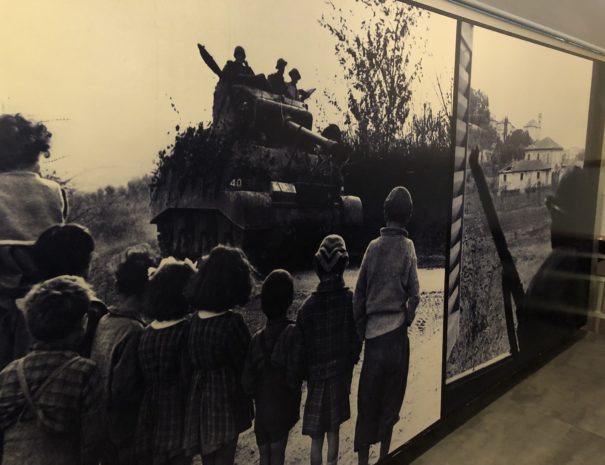
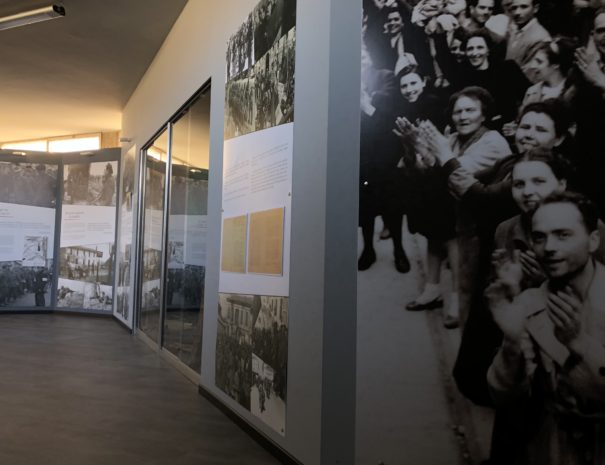
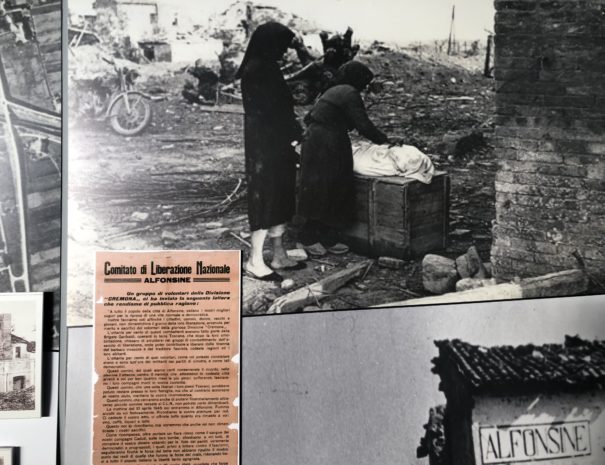

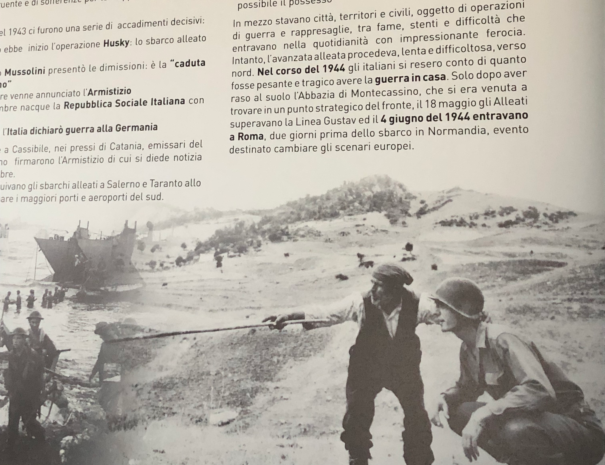
Recovery and reuse
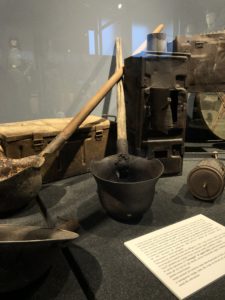
An intense activity of recycling objects and materials initially designed for war purposes already started during the war, adapting them to the daily life of the local population. Because of the shortage of materials and the (scarce) presence of substitutes that had accompanied the Italian economy up to that moment, the scraps of war become a great source of raw materials and precious components, in particular after the end of the war. Farmers, artisans and families begin to recycle what had been left on the battlefield and to make tools and utensils functional to everyday life.
So a military helmet finds a new function as a basin, shove or winter warmer; a bomb case turns into a cup; perforated metal plates initially used to overcome the mud obstacle become gates for homes, still visible at the entrance of some country houses.
Several examples of this process are displayed in the museum’s showcases, but often they are still present in the local’s homes.
Lorem ipsum
Lorem ipsum dolor sit amet, consectetur adipiscing elit, sed do eiusmod tempor incididunt ut labore et dolore magna aliqua
Lorem ipsum dolor sit amet, consectetur adipiscing elit, sed do eiusmod tempor incididunt ut labore et dolore magna aliqua
Lorem ipsum dolor sit amet, consectetur adipiscing elit, sed do eiusmod tempor incididunt ut labore et dolore magna aliqua
La Battaglia del Senio
“Tutto l’orizzonte orientale era una massa di rumori. I proiettili producevano un’infinita gamma di effetti sonori: quelli da 25 libbre sfrecciavano con il rumore di una grande tenda lacerata, mentre i 4,5 e i 5,5 fendevano l’aria come treni lanciati a tutta velocità che passavano sopra le nostre teste e piombavano sull’argine. A volte il fragore diventava più aspro, come se il cielo fosse un’immensa porta d’acciaio sbattuta in faccia al nemico… Sembrava impossibile che tutto quel baccano provenisse da una fonte invisibile e si alzava lo sguardo come aspettandosi di veder il cielo lacerato e dilaniato dai proiettili di passaggio, proprio come li mostrano i disegnatori di fumetti. Ma non c’era niente, tranne la foschia e gli aerei che volavano in cerchio.” John Ellis, The Sharp End of the War
Ancora oggi, ogni paese lungo il corso del fiume trattiene il ricordo della battaglia sul fronte del fiume Senio e dei combattenti che ridettero loro la libertà: nei primi giorni di aprile del 1945 soldati di cinque continenti, riuniti nell’Ottava Armata britannica, insieme ad Italiani dell’Esercito regolare e a partigiani volontari, sconfissero le ultime difese dei tedeschi e dei fascisti della R.S.I., ponendo fine alla campagna d’Italia. Eserciti di oltre venti nazioni si scontrarono, dalla Nuova Zelanda all’India, dalla Polonia al Canada e al Nepal (i Gurkha). Assieme all’esercito alleato la presenza dei reparti del nuovo Esercito italiano, all’interno dei quali erano numerosi anche gli ex partigiani volontari dell’Italia centrale.
Dalla foce del Senio nel Reno fino al mare furono invece i partigiani della 28° Brigata Garibaldi, riconosciuti come unità combattente dagli Alleati, a guidare le operazioni lungo la costa adriatica, fin nel cuore del Veneto.
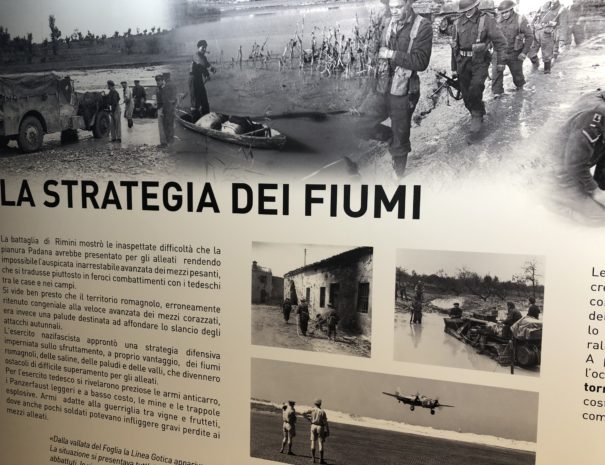
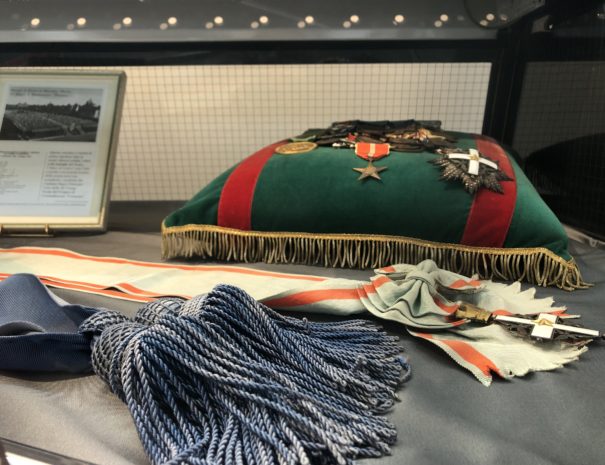
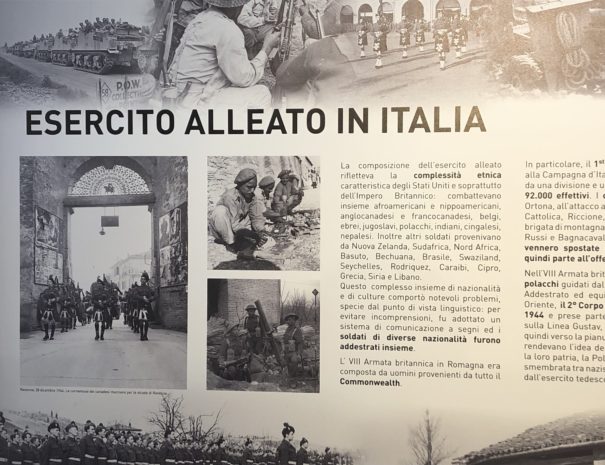
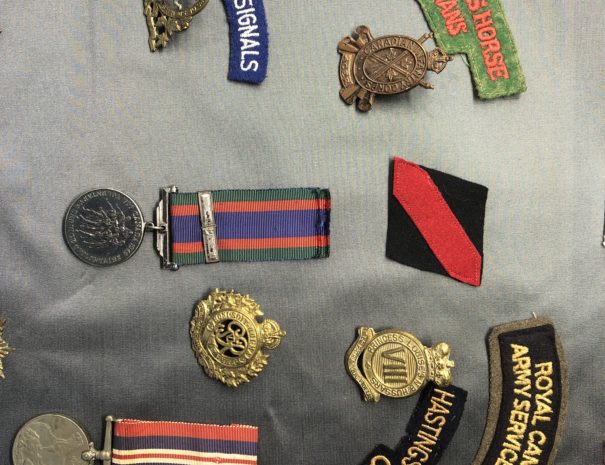
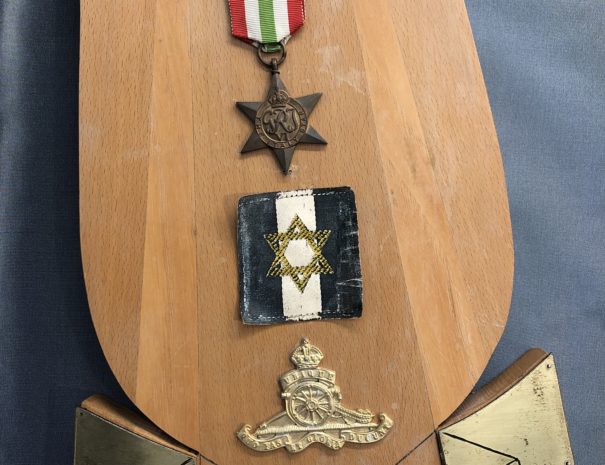
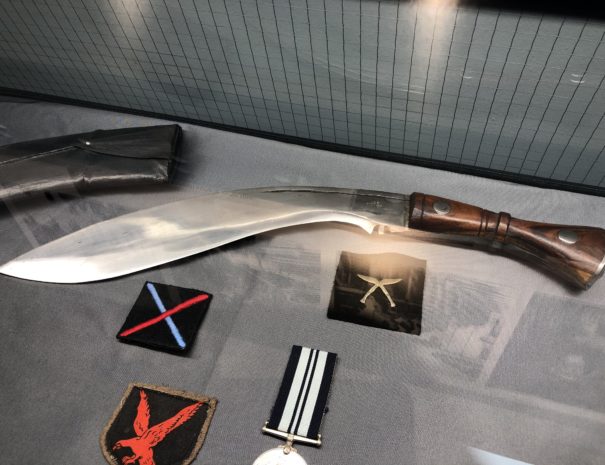
Il Gruppo di Combattimento Cremona
Il 10 aprile 1945 protagonisti della liberazione di alfonsine furono i fanti del Gruppo di combattimento Cremona: soldati del nuovo esercito italiano, per la maggior parte ex partigiani.
Nel luglio del 1944 lo Stato Maggiore Italiano istituì due gruppi di combattimento, con uomini dalle divisioni “Cremona” e “Friuli”, reduci dalla liberazione della Corsica e della Sardegna e richiamati sul continente per essere inquadrati nelle fila dell’VIII armata britannica.
Guidato dal Generale Clemente Primieri, il GdC “Cremona” poteva contare su quasi 10.000 soldati, con i reparti 21° e 22° fanteria e 7° artiglieria e un battaglione del Genio, a cui si aggiunsero man mano centinaia di volontari ed ex partigiani che provenivano dalle zone liberate di Marche, Toscana e Umbria. L’arruolamento di questi ultimi in particolare, nonostante le opinioni divergenti dell’esercito alleato rispetto al regio esercito, era infatti necessario per compensare le formazioni regolari che si trovavano sottonumero.
Nel nostro territorio il “Cremona” aveva il compito di scardinare le difese tedesche e fin dai primi giorni dovette sostenere violenti attacchi. Durante l’operazione Sonia in particolare, che ha portato alla liberazione dei territori sul Senio tra cui Alfonsine, dovevano attraversare il fiume e garantire una testa di ponte lungo la statale 16 adriatica: alle 5.25 del 10 aprile 1945 i Cremonini forzarono il Senio, conquistando Alfonsine e Fusignano e salvando così da morte certa molti abitanti dei due paesi; se non fossero riusciti nell’impresa infatti, gli Alleati avrebbero utilizzato l’artiglieria pesante per garantirsi un varco.
Le perdite subite dal Gruppo di Combattimento “Cremona” ammontano a 178, mentre 605 rimasero feriti e 80 furono i dispersi. Le spoglie dei Caduti sono conservate nel Sacrario di Camerlona (RA) a loro dedicato e gli abitanti dei paesi liberati dall’occupazione nazifascista mantengono ancora oggi saldi legami di amicizia con quelli di provenienza dei combattenti.




